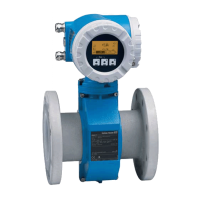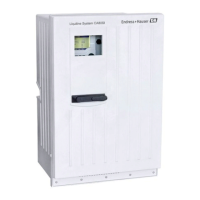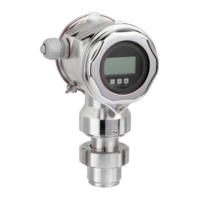OXY5500 Gas Analyzer Operating Instructions
Endress+Hauser 13
4.5 Hardware and tools for installation
Depending on the particular configuration of accessories and options ordered, you may need the following hardware
and tools to complete the installation process.
4.5.1 Hardware
• 1/4 in. (~6 mm) thickness Unistrut® (or equivalent) bolts and spring nuts
• Stainless steel tubing (using 1/4 in. [~6 mm] O.D. x 0.035 in. wall thickness, seamless stainless steel tubing is
recommended)
• 3/4 in. conduit or appropriate Ex e M20 cable gland
• 1/4 in. (M6) screws with an appropriate screw length for wall material, e.g., concrete, drywall, etc.
4.5.2 Tools
• Drill and bits
• Tape measure
• Level
• Pencil
• Screw driver (Philips)
• Screw driver, small (Flat-head)
• Needle-nose pliers
4.6 Analyzer mounting
The OXY5500 analyzer is manufactured for wall or Unistrut® (or equivalent) metal framing installations. Depending
on your application and configuration, the analyzer will come mounted on a plate or Unistrut frame. Refer to
Appendix A for drawings with detailed wall mounting dimensions.
When mounting the analyzer, be sure not to position the instrument so that it is difficult to operate adjacent
devices. Allow 1 m (3 feet) of room in front of the analyzer and any switches.
It is critical to mount the analyzer so that the supply and return lines reach the supply and return connections on
the chassis while still maintaining flexibility so that the sample lines are not under excessive stress.
Mounting brackets for equipment exceeding 18 kg intended for wall mounting and/or part(s) that support heavy
loads shall withstand four times the maximum static load.
Because the breaker in the power distribution panel or switch will be the primary means of disconnecting the
power from the analyzer, the power distribution panel should be located in close proximity to the equipment and
within easy reach of the operator, or within 3 meters (10 feet) of the analyzer.
4.6.1 Mounting the analyzer
1. Select a suitable location to mount the analyzer. Choose a shaded area or use an optional analyzer hood (or
equivalent) to minimize sun exposure.
Endress+Hauser analyzers are designed for operation within the specified ambient temperature range. Refer to
Appendix A. Direct sun exposure in some areas may cause the analyzer temperature to exceed the maximum
range.
2. Locate the mounting holes on your unit. Refer to Figure 7 and the system drawings in Appendix A→ .

